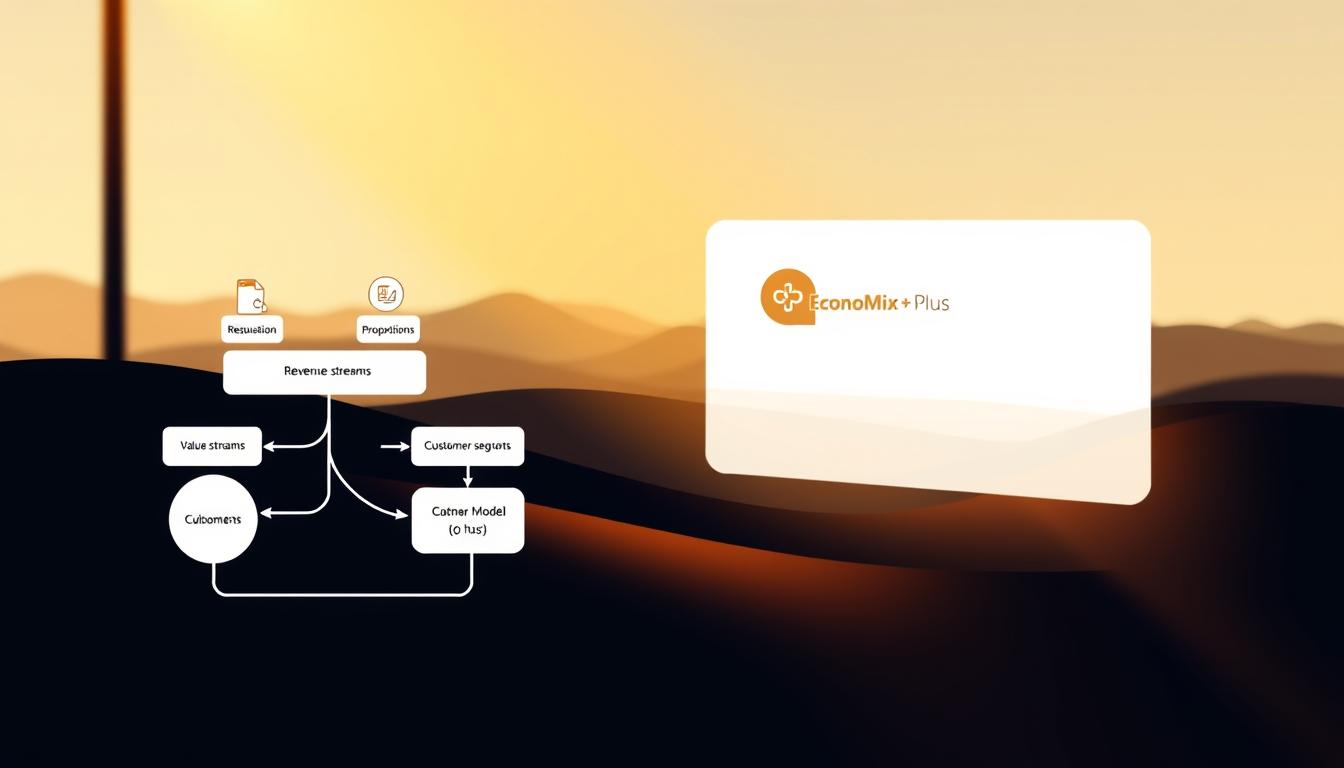Imagine retiring 10 years earlier than planned while maintaining your current lifestyle. Financial independence isn’t about luck – it’s about intentional choices that align with today’s fast-changing markets.
Gone are the days when low-risk bank accounts or bonds could reliably grow your money. Modern wealth-building demands smarter tactics.
Tax-advantaged retirement accounts like IRAs and 401(k)s remain foundational, offering compound growth with deferred taxes. Pair these with automated contributions, and you create a system that works while you sleep. But true diversification means looking beyond traditional tools.
For example, crafting a personalized stock strategy tailored to your goals can accelerate progress better than generic “safe” options.
Consider this: Every dollar saved by reducing high-interest debt or unnecessary expenses becomes fuel for investments with higher growth potential. This shift requires balancing risk through assets like index funds or real estate – not chasing fleeting trends. The right mix lets you build confidence as your portfolio evolves with market cycles.
Key Takeaways
- Tax-deferred accounts amplify long-term growth through compound interest
- Automated investing creates consistency without emotional decision-making
- Dynamic assets often outperform traditional low-yield options over time
- Debt reduction directly increases available capital for wealth-building
- Personalized strategies adapt better to changing markets than one-size-fits-all plans
Understanding the Path to Financial Independence
Picture waking up knowing your money works for you, not the other way around. This mindset shift defines financial independence – having enough income from investments to cover your costs and expenses without relying on a job. For some, it means traveling freely; for others, it’s pursuing passions or leaving a legacy while planning for retirement.
What Financial Independence Means to You
Your definition of freedom shapes your strategy. Start by calculating your monthly expenses and multiplying them by 300 – this rough target shows how much you’ll need to sustain your lifestyle. This figure serves as a foundational benchmark, guiding your financial planning and helping you visualize the total amount necessary for long-term independence.
Tools like zero-based budgeting help identify wasteful spending, turning those savings into fuel for your portfolio. By allocating every dollar to a specific purpose, you can prioritize essential expenses while also setting aside funds for investments and savings.
This disciplined approach not only fosters a better understanding of your financial habits but also empowers you to make informed decisions that align with your goals and values.
Establishing a Clear Financial Roadmap
Break big goals into yearly milestones. If retiring in 15 years feels overwhelming, focus on hitting smaller targets like maxing out retirement accounts or eliminating high-interest debt first. Studies show people who track progress weekly are 42% more likely to stay on course.
Diversification matters here. While 401(k)s and IRAs form your foundation, pairing them with assets like index funds or rental properties balances risk. Remember: Your plan must evolve as markets shift and life priorities change. Regular check-ins keep your strategy aligned with what truly matters to you.
Top Investment Strategies to Achieve Financial Independence
Building lasting wealth requires tools that outpace inflation while matching your lifestyle goals. Traditional savings accounts now lose purchasing power as inflation averages 3-4% annually – far above typical 0.5% bank rates.
Dynamic approaches let your money work for you, providing ways to grow through market participation rather than stagnation, ultimately supporting your retirement plan and helping you achieve your financial goals.
Why Outdated Savings Methods Fall Short
Interest-dependent tools often trap savers in a cycle of diminished returns. A $10,000 deposit earning 1% interest grows to just $10,100 in a year – barely covering basic fees. Compare this to diversified index funds averaging 7-10% annual returns over decades.
| Tool Type | 5-Year Growth* | Risk Level | Liquidity |
|---|---|---|---|
| Savings Account | 2.5% | Low | High |
| Index Funds | 40-60% | Medium | Medium |
| Real Estate | 25-35% | High | Low |
Aligning Investments With Your Comfort Zone
Start by asking: “How would I react if my portfolio dropped 20% tomorrow?” Your answer determines suitable assets. Younger investors often handle more volatility for growth potential, while those nearing retirement might prioritize stability.
Automated contributions solve two problems: they enforce discipline and reduce emotional decisions. Vanguard research shows investors using auto-deposits stay committed 73% longer during market dips.
Three steps to refine your strategy:
- Calculate monthly investable income after essential expenses
- Allocate percentages to growth assets based on risk tolerance
- Review allocations quarterly using free tools like Personal Capital
This approach turns stagnant savings into active wealth-building engines. Your money works harder when it’s engaged in markets rather than sitting idle.
Maximizing Tax-Advantaged Retirement Contributions
What if every dollar you saved could work twice as hard toward your retirement goal? Tax-advantaged accounts turn this idea into reality by shielding your growth from immediate taxes. These tools let your money compound faster than taxable alternatives – a game-changer for long-term wealth building and investment strategies.
Understanding the benefits of these accounts can help you make informed decisions about your income and costs, providing confidence in your financial plan.

Leveraging 401(k), IRA, and Roth Options
Traditional 401(k)s and IRAs reduce your taxable income now, while Roth versions offer tax-free withdrawals later. In 2024, you can contribute up to $23,000 to a 401(k) or $7,000 to an IRA ($8,000 if over 50).
| Account Type | Tax Benefit | 2024 Limit | Withdrawal Rules |
|---|---|---|---|
| 401(k) | Tax-deferred | $23,000 | Penalty-free at 59½ |
| Traditional IRA | Tax-deductible | $7,000 | Taxed as income |
| Roth IRA | Tax-free growth | $7,000 | No taxes if over 59½ |
Accelerating Growth With Catch-Up Contributions
If you’re 50+, the IRS lets you add extra funds annually – $7,500 to 401(k)s and $1,000 to IRAs. A 55-year-old maxing both could stash $30,500 yearly in their 401(k) alone.
Pair this strategy with low-cost index funds instead of guaranteed-return products. Over 20 years, $500/month in a 401(k) with 7% returns grows to $263,000 – $86,000 more than taxable accounts earning the same rate.
Diversify Your Portfolio for Long-Term Stability
Think of your portfolio as a weather-resistant shelter – it needs multiple supports to withstand storms. Spreading your money across varied assets reduces reliance on any single market performer.
This approach smooths out volatility while keeping growth potential intact, allowing you to achieve your retirement goal and secure your financial future. Exploring different ways to invest can also provide significant benefits, helping you manage debt and increase your income over time.

Investing in Low-Cost Index Funds and Alternatives
Index funds like Vanguard’s S&P 500 ETF (VOO) offer instant diversification at 0.03% fees – 97% cheaper than actively managed funds. They mirror entire market segments rather than betting on individual stocks. Pair these with alternatives like REITs or commodities to further spread risk.
| Asset Class | 5-Year Return | Volatility |
|---|---|---|
| U.S. Stocks | 10.7% | High |
| Global Index Fund | 8.9% | Medium |
| REITs | 6.5% | Medium |
Balancing Assets Beyond Guaranteed Returns
Guaranteed products often cap your returns below inflation. Instead, allocate 60-80% to growth-focused index funds, reserving the rest for stable assets like treasury ETFs. Rebalance quarterly using apps like Mint to maintain your target mix.
Three signs you need adjustment:
- One asset class grows beyond 5% of your target allocation
- Major life changes alter your retirement timeline
- Market shifts create new opportunities (e.g., sector rotations)
This strategy helps you build wealth steadily without chasing yesterday’s winners. Your portfolio evolves with markets while staying aligned with personal goals.
Harnessing the Power of Compound Growth and Automation
What if your money multiplied while you focused on living life? Compound growth acts like a silent partner in wealth creation, turning small, consistent contributions into significant sums over time. A $500 monthly investment at 7% annual returns becomes $567,000 in 30 years – $420,000 from growth alone.

Set It and Grow It
Automating transfers to retirement accounts eliminates guesswork. Tools like Vanguard’s auto-deposit feature let you schedule contributions weekly or monthly. This consistency matters: Missing just three $500 deposits could cost $6,200 in future value over 20 years.
Prioritize tax-advantaged accounts first. Maxing out your 401(k) or IRA triggers automatic dollar-cost averaging, buying more shares when prices dip. This approach not only helps in mitigating the effects of market volatility but also maximizes your investment potential over time.
By consistently investing regardless of market conditions, you take advantage of lower prices during downturns, which can significantly enhance your overall returns. Studies show investors using auto-pilot strategies stay committed 2.7x longer during market swings, allowing them to ride out fluctuations without the emotional stress that often leads to poor decision-making.
The Reinvestment Multiplier
Reinvesting dividends supercharges compounding. A $10,000 investment earning 2% yearly dividends grows to $32,070 in 30 years if payouts are cashed out. Reinvested? It balloons to $43,219 – a 35% difference.
Three steps to activate growth:
- Enable dividend reinvestment in brokerage account settings
- Align auto-contributions with payday schedules
- Use windfalls (tax refunds, bonuses) for extra deposits
This strategy transforms savings into self-fueling engines. Your money builds momentum with every automated transfer and reinvested cent – no willpower required.
Strategies to Manage Investment Risk and Market Volatility
Navigating market swings requires more than hope—it demands proven methods to protect your progress. In an unpredictable financial landscape, relying solely on optimism can lead to missed opportunities and potential losses. While traditional savings accounts offer false security, smart systems help you stay steady when prices fluctuate. These systems not only safeguard your investments but also allow you to capitalize on market downturns. Let’s explore two techniques that turn uncertainty into opportunity.
Embracing Dollar-Cost Averaging
Investing fixed amounts regularly smooths out price swings. Instead of timing the market, you buy more shares when prices dip and fewer when they peak. A Vanguard study found this approach reduces emotional errors by 43% compared to lump-sum investing.
| Method | 10-Year Return* | Volatility Impact |
|---|---|---|
| Lump Sum | 7.2% | High |
| Dollar-Cost Averaging | 6.8% | Low |
Set up automatic transfers matching your pay schedule. Even $100 weekly adds up to $5,200 annually—buying power that grows with compounding.
Regular Portfolio Rebalancing Techniques
Your risk tolerance changes as you near retirement. Rebalancing ensures your mix stays aligned with goals. Fidelity research shows quarterly adjustments improve long-term returns by 0.4% annually.
Three-step process:
- Evaluate current allocations vs. target percentages
- Sell overperforming assets to lock in gains
- Buy underweighted options at lower prices
This discipline helps you avoid chasing trends. You’ll systematically buy low and sell high—without predicting the next market move.
Combining these methods creates a self-correcting strategy. Your investments adapt to changing conditions while keeping you on track for financial independence. Remember: Consistency beats perfection when building lasting wealth.
Staying Informed and Seeking Professional Guidance
Knowledge fuels every dollar’s potential in your journey toward financial freedom. Staying updated on market trends and leveraging modern tools helps you make decisions aligned with your goals. Digital resources now offer real-time insights that were once exclusive to Wall Street professionals.
In today’s fast-paced financial landscape, having access to comprehensive data and analytics can significantly enhance your understanding of market dynamics. Utilizing platforms that aggregate financial news, expert analyses, and performance metrics can provide you with a clearer picture of where to invest your resources.
This empowers you to make informed decisions that not only reflect current trends but also align with your long-term financial objectives.
Utilizing Investment Calculators and Educational Tools
Free apps like Empower and Mint track your net worth across accounts while analyzing spending patterns. Investment calculators reveal how small changes – like increasing monthly contributions by $100 – could add $42,000 to your retirement fund over 20 years.
| Tool Type | Key Benefit | Best For |
|---|---|---|
| Compound Growth Calculator | Visualizes long-term returns | Goal setting |
| Risk Assessment Quiz | Matches assets to comfort levels | Portfolio alignment |
| Budget Tracker | Identifies savings opportunities | Cash flow management |
Consulting Financial Advisors for Tailored Advice
A certified planner helps bridge knowledge gaps. They can optimize tax strategies for your 401(k) withdrawals or suggest practical tips to achieve financial success during market downturns. Studies show investors using advisors earn 3% higher annual returns on average.
Three scenarios when expert input matters most:
- Navigating complex decisions like early retirement
- Balancing multiple goals (college savings + debt payoff)
- Adjusting strategies after major life changes
Regular check-ins keep your plan responsive to shifting market conditions. Combine self-education with professional insights to build resilience against economic surprises.
Conclusion
Your journey to financial freedom blends modern tools with disciplined action. Tax-advantaged accounts like Roth IRAs multiply wealth by shielding growth from taxes, while automated investing turns consistency into compound gains. Ditching low-yield savings for dynamic assets – index funds, real estate, or dividend stocks – helps your money outpace inflation.
Remember: diversification protects against risk without sacrificing growth. Pair retirement accounts with alternative options to build resilience. Track progress using free resources like budgeting apps, adjusting allocations as life goals evolve.
Start small but start today. Even $100 monthly in a 401(k) grows to $86,000 in 20 years at 7% returns. Combine this with debt reduction and expert guidance to refine your strategy over time.
The path works when you work the plan. Modern methods beat traditional savings by turning time into your greatest ally. Your future self will thank you for beginning now.
FAQ
▶
▶
▶
▶
▶
▶
▶














